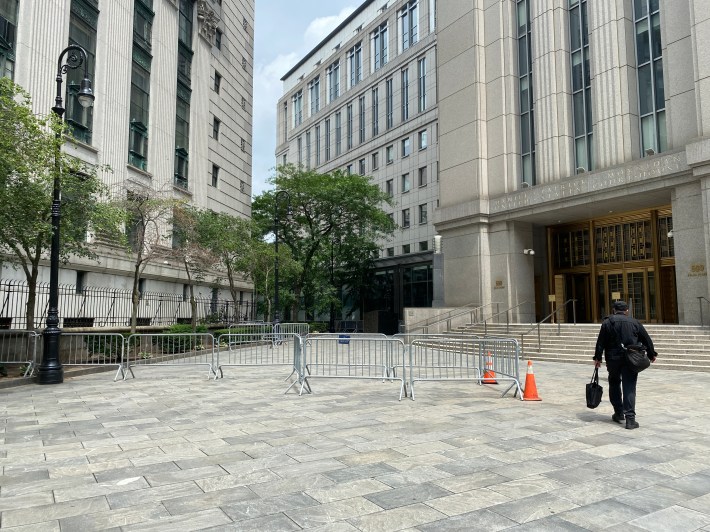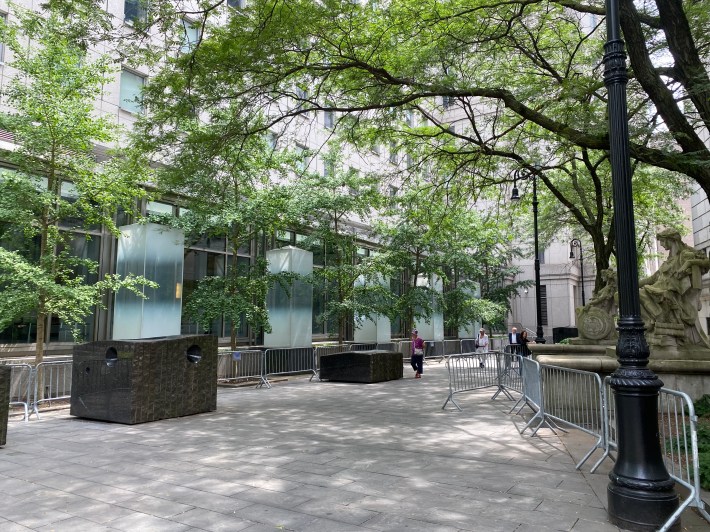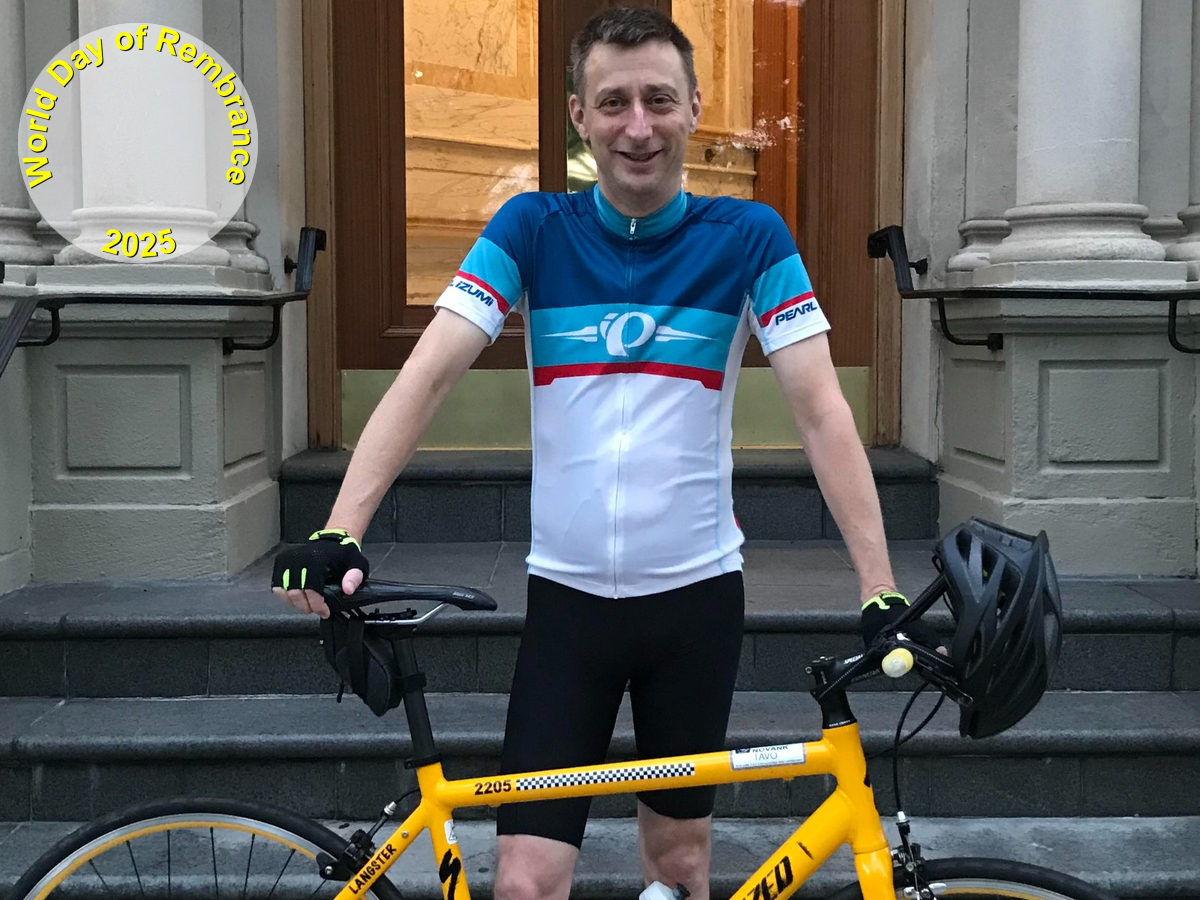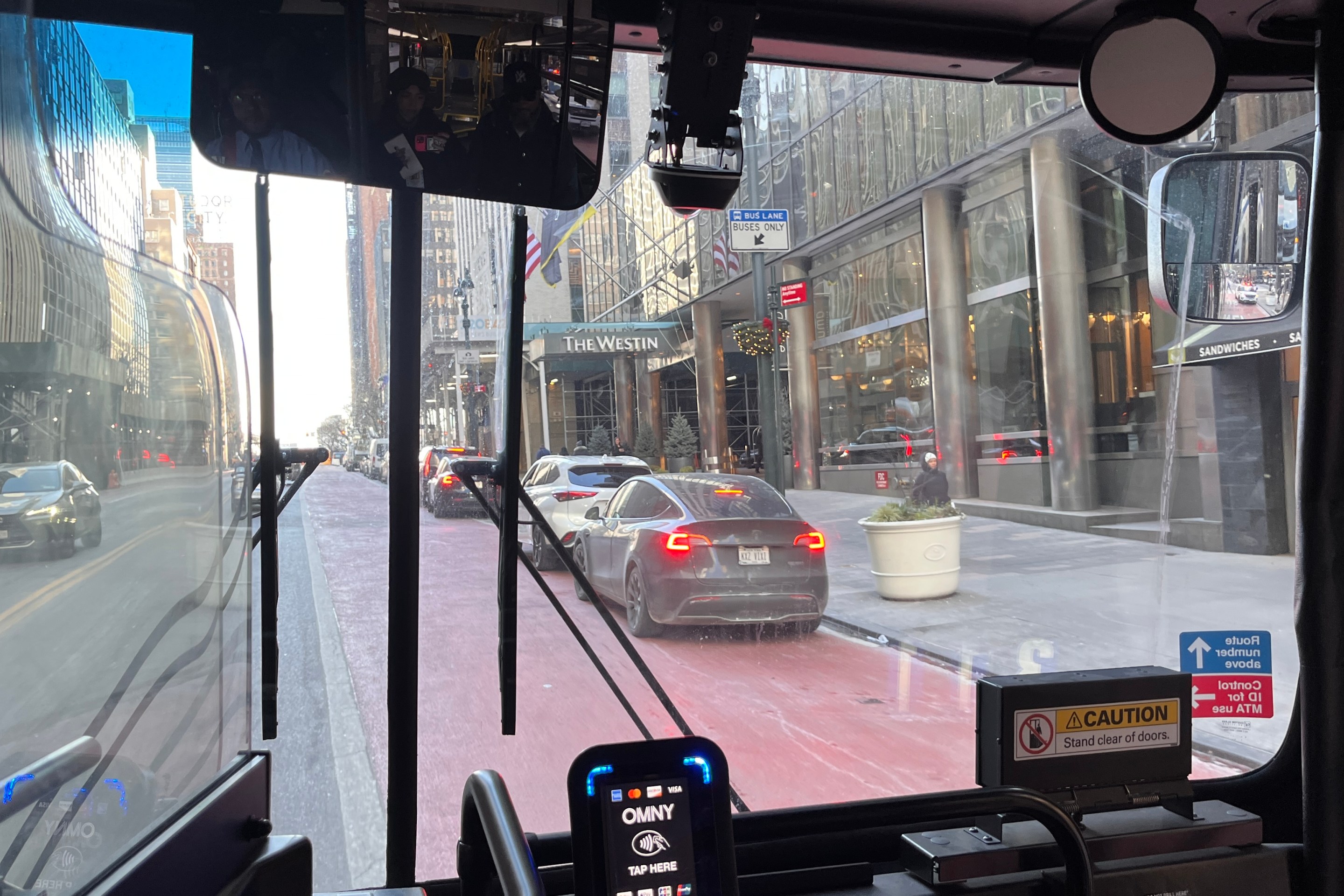Get off my lawn!
A federally-funded police gate will lock down a pedestrian plaza huddled between two courthouses in Lower Manhattan — an area already cluttered with freestanding metal gates and checkpoints fortifying the NYPD’s headquarters nearby — and stifle local connectivity, residents charged.
The General Services Administration, which oversees federal buildings, plans to install an eight-foot-tall metal fence on both sides of the small pedestrian courtyard sandwiched between the Moynihan Southern District Court and the back of the state's New York Supreme Court building. The soaring gate, between Worth and Pearl streets, would make permanent the current raft of metal barricades and keep public use restricted to daylight hours — all at the behest of the NYPD.
Fearing encroachment into public space, residents of the area worry that the fence will, given time, completely bar them from an area they say is crucial to the community.
“In my 30 years of community organizing, I’ve watched this disturbing pattern repeat itself over and over again,” Jan Lee, a civic activist in Chinatown whose family has lived in the area for generations, said at a committee meeting of Community Board 1 last week.
“Our public plazas, all around us, started out as public spaces — and we watched them bring out the metal gates, and then they reinforce those metal gates, and then they zip tie the metal gates, and then they create permanent gates and then they put a padlock on the permanent gates."
The area around 1 Police Plaza has been a hotbed for law enforcement for decades: the nearby half-mile Park Row has been closed to private vehicles since the 9/11 terror attacks, a stipulation of the NYPD’s post-terror attack security plan, and narrowly avoided a reopening earlier this year. Fences, gates and bollards run roughshod through the Civic Center’s pathways, creating an area nonconducive for recreational use and mobility.

Members of the public fear the latest project is just more ground ceded to police and decried the "militarization" of the area.
“I have watched our neighborhood lockdown gradually,” resident Jeanie Chin said at the CB 1 Landmarks & Preservation Committee meeting. “It started with Park Row. It was temporary, and then more fencing came up and more permanent fencing. Little by little, they would sneak things in and try to justify it.”
A GSA representative said more crowd control measures are needed for an area that sees large demonstrations — pointing specifically to the Black Lives Matter protests that swept the city in 2020 — and high-profile court cases involving the likes of musicians Ed Sheeran and Sean “Diddy” Combs.
“While most protests are peaceful, sometimes those peaceful protests become unintentional non-peaceful protests and it’s helpful for us to control any unintended consequences of gatherings,” GSA's David Polk said to the CB 1 committee. “I know that this is not an ideal solution that everyone would necessarily agree on, but this is a largely federal property.”
Polk mentioned that the NYPD and the Department of Citywide Administrative Services had originally wanted a taller fence and even shorter public use hours, but that the federal agency had successfully walked back those requests in the public's interest.
But the fence will still create a roadblock for neighbors hurrying home in the evening, cutting off foot traffic to two residential developments on the block, Chatham Towers and Chatham Green.
“We’ve had very few incidents there,” said Susan Cole, a member of the community board’s committee. “I can only tell you that the access for the people who live in this community is critical, and you’re taking away something [and it will be] quite awful. I can’t agree with it.”

The small pedestrian plaza also features an art installation — a series of carved granite blocks — created by architect Maya Lin, who is best known for designing the 1982 Vietnam Veterans Memorial in Washington, D.C. The loss of space for such art is particularly egregious, said Lee, who implored the GSA to find different ways to calm crowds without forcing them out completely.
“I cannot begin to express how offensive this is: to watch our plaza spaces change; the context of our art change; the respect of our art be degraded by low-maintenance,” he said. “And now, to be fenced in — eventually, permanently.”






